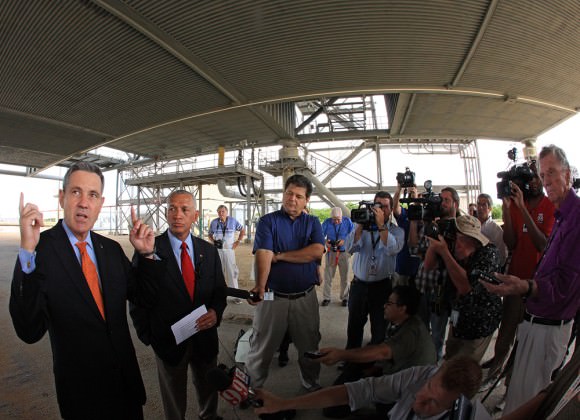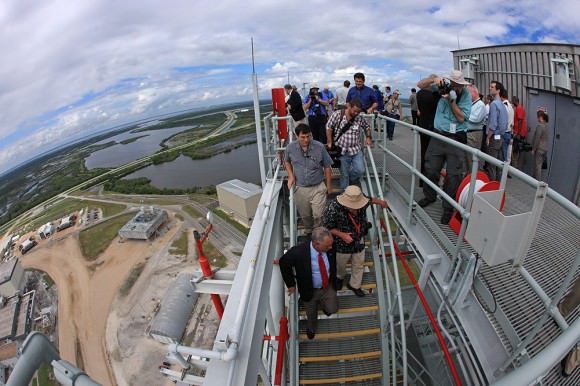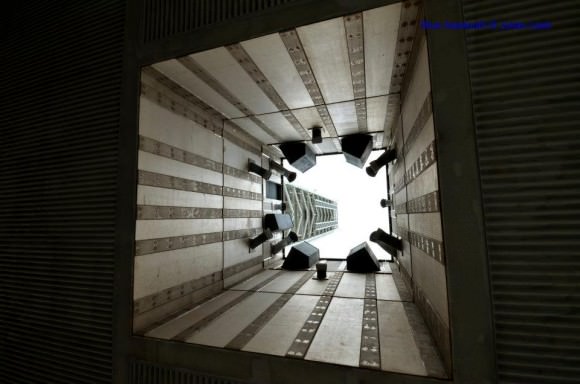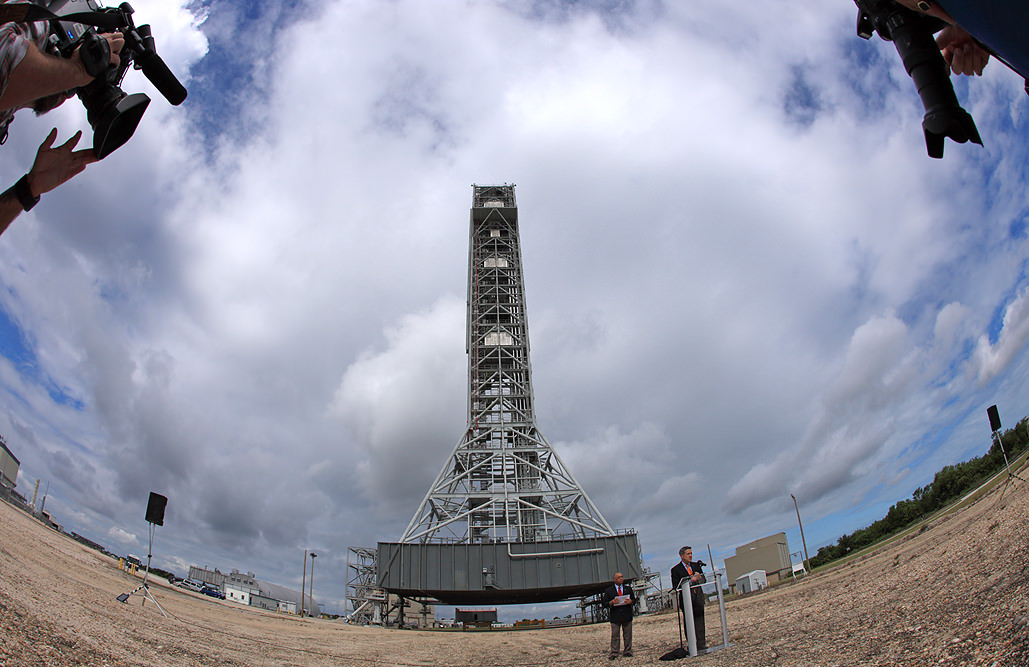[/caption]
CAPE CANAVERAL, Fla – NASA Administrator Charles Bolden stopped by Kennedy Space Center in Florida to tour NASA’s Mobile Launch Platform. Bolden was joined by fellow former shuttle astronaut and current Kennedy Space Center Director Robert Cabana. The duo toured the 355-foot-tall structure Tuesday, Oct. 11 at 11 a.m. EDT.
The Mobile Launcher’s future was in doubt after the Constellation Program was cancelled. Although nothing definite was stated – everything from scrapping the structure, using it as a platform for tourists at the Kennedy Space Center Visitor Center to just keeping it in reserve was suggested. The space agency now plans to use the structure to launch the Space Launch System or SLS rocket.

The NASA administrator’s visit was designed to help promote NASA’s recently-unveiled SLS heavy-lift rocket. The launch vehicle somewhat resembles a cross between the cancelled Ares V and the Saturn V moon rockets that launched Apollo astronauts to the moon. It is slated to begin conducting flights by 2017. SLS is comprised primarily of so-called “legacy hardware” – proven technology derived from the space shuttle and Saturn systems.
Bolden spent some time chatting with reporters and working to reassure Kennedy Space Center’s remaining workforce, as well as several hundred Space Coast community and business leaders and elected officials that the area’s future was bright. Bolden used the visit to state that this was a sign that things were improving in the region. He highlighted the fact that new capabilities, such as the placement of the Commercial Crew program office at Kennedy, will help to maintain aerospace skills and capabilities.

“As our nation looks for ways to compete and win in the 21st century, NASA continues to be an engine of job growth and economic opportunity,” Bolden said. “From California to Florida, the space industry is strong and growing. The next generation of explorers will
not fly a space shuttle, but they may be able to walk on Mars. And those journeys are starting at the Kennedy Space Center today.”
The shuttle elements of SLS include the RS-25 engines (Space Shuttle Main Engines) along with modified versions of the Solid Rocket Boosters that were employed on the space shuttle. The Saturn elements (descendent) are the J-2X engines, which are simpler variants of the J-2 engines employed during the Apollo era.

NASA made its plans for the SLS public in September, just one day after Alliant Techsystems (ATK) and NASA announced that an unfunded Space Act Agreement deal to study the viability of using the Liberty rocket to ferry astronauts to orbit. If all goes according to plan, SLS will eventually be utilized to launch the Orion Multi-Purpose Crew Vehicle. It is hoped that the introduction of SLS and other space systems will help to stem the flow of highly-trained and experienced workers from the space agency.

